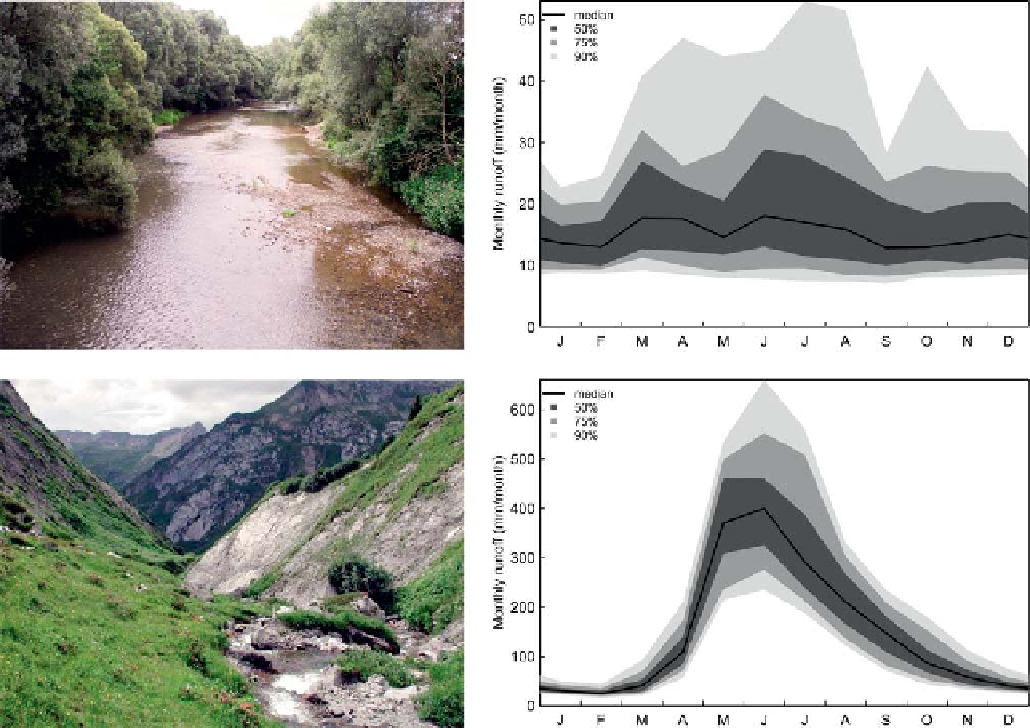Geography Reference
In-Depth Information
Figure 6.3. (Top) Lafnitz River at Dobersdorf, Austria (area 925 km
2
, elevations range from 198 to 1725 m a.s.l., mean precipitation 806 mm/yr,
porous aquifer in quaternary sediments). (Bottom) Lech River at Lech, Austria (area 84.3 km
2
, elevation 519
-
2378 m a.s.l., mean
precipitation 1513 mm/yr, permeable hard-rock aquifer, chalk-shale). Photos: HD Burgenland, C. Reszler.
soil or rock zone, in groundwater, snow and ice, and water
in rivers, wetlands, natural lakes and man-made reser-
voirs. Here the role of storage in snow and ice, which
has an intrinsically seasonal component, is separated from
the role of storage in geological and soil formations,
which are influenced primarily by climatic seasonality.
Other factors, including the seasonality of vegetation
activity (phenology) and transpiration losses, are also
discussed.
uni-modal pattern of precipitation in the north of the coun-
try, combined with a pronounced seasonality in E
p
, and a
strongly bimodal pattern of precipitation in the south of
Ethiopia, where E
p
varies only a little throughout the year,
are closely associated with the regional variations in runoff
seasonality.
As alluded to earlier in the example of Asian monsoonal
climates, in many areas the major source of uncertainty in
predicting seasonal runoff variability is prediction of sea-
sonal precipitation variability. Such hydrometeorological
variations require investigation and understanding of cli-
mate at the global and regional level. For example, large-
scale atmospheric circulation patterns such as the North
Atlantic Oscillation influence regional climate (e.g., pre-
cipitation, humidity and air temperature), with direct con-
sequences for river runoff (Laizé and Hannah,
2010
).
Improved understanding of climate seasonality, in the
context of regional climate features, and their relationship
to the flow regime is needed to improve predictions of
Climate forcing
The first-order control on seasonality of runoff generation
is climate (Bower et al.,
2004
). Many regions of the world
exhibit strong seasonality in climate forcing, ranging from
completely in-phase to completely out-of-phase (
Section
5.2.1
).
Figure 6.2
, for example, presented a regional pic-
ture of seasonal variation of precipitation, potential evap-
oration and runoff in Ethiopia. The relative strength of
seasonality in water and energy availability, e.g., a strong

Search WWH ::

Custom Search